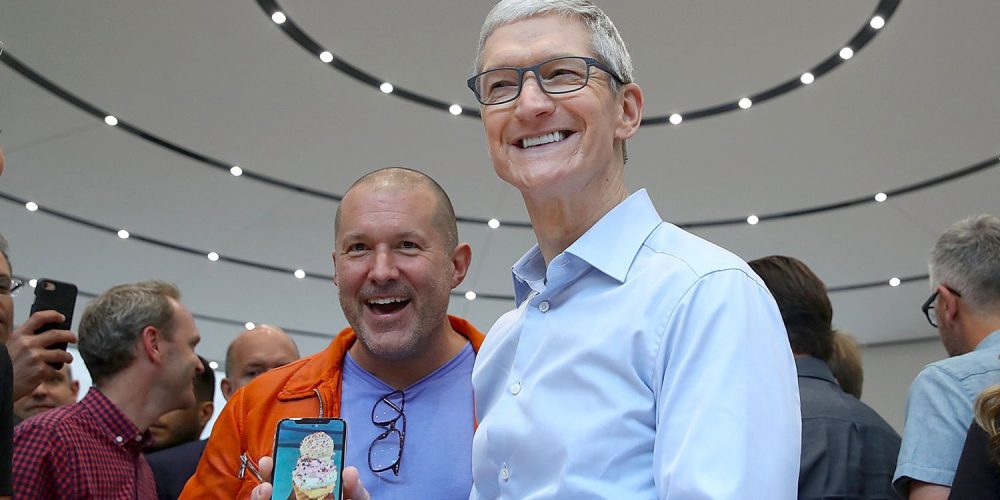“What would happen to Apple now that Steve Jobs is dead?” That was the billion-dollar question made by Wall Street, Apple fans, and the company’s employees in 2011.
More than a decade later since Apple’s cofounder died, the Cupertino company is doing better than ever, but a new book by New York Times Tripp Mickle called After Steve talks about how Apple became a trillion-dollar company and lost its soul. One of the reasons was Jony Ive leaving the company.
In an article published today in the newspaper, Mickle adapts a part of his book and talks about the final years of Jony Ive at the company.
It was 2014, and Apple’s future, more than ever, seemed to hinge on Mr. Ive. His love of pure, simple lines had already redrawn the world through such popular products as the iMac, iPod and iPhone. Now, he was seated at a conference table with Tim Cook, the company’s chief executive (…). They both wanted another hit, but Mr. Ive was pushing for a product reveal more audacious than any in the theatrical company’s history.
Jony Ive envisioned the future of the Apple Watch as a luxury product. Not only did he want to build a $25 million lavish white tent to promote the first Watch, but he “regarded a rave from Vogue as more important than any tech reviewer’s opinion.” According to Mickle, “the tent was critical to making the event as glamorous as a high-end fashion show.”
In the end, Apple’s CEO Tim Cook accepted Ive’s idea, although the designer would later recast it as a “Pyrrhic victory.”
He would tell colleagues that the debate over the event and the larger struggle over the watch’s marketing were among the first moments that he felt unsupported at Apple.
With time, as we all know, the Apple Watch transitioned from a fashion product to a fitness product.
Post Jobs: Jony Ive’s and Tim Cook’s different visions

After Steve Jobs died, Tim Cook was careful about losing Jony Ive. Three years later, in 2014, “former company executives estimated that an Ive departure would erase more than $50 billion from Apple’s market value, or as much as 10 percent,” and this is why Cook decided to go with Ive’s tent idea.
In another part of the article, Tripp Mickle tells how Jony Ive becoming chief of design made him “overwhelmed by managing a staff that stretched into hundreds, multiples of the 20-person design team he ran for years”:
In the midst of those changes, Mr. Jony Ive approached Mr. Cook and told him that he was tired and wanted to step back from the business. Without Mr. Jobs, he had assumed much of the responsibility for the product’s design and its marketing. People close to Mr. Ive said he had found it draining to fight with his colleagues over promotion and had become overwhelmed by managing a staff that stretched into the hundreds, multiples of the 20-person design team he ran for years.
Mr. Cook feared that Mr. Jony Ive’s departure would lead investors to sell shares. To avoid that, he and Mr. Ive reached an agreement for the designer to relinquish daily management responsibilities and work primarily on new products. He would work part time. The company gave him the title of chief design officer and promoted two of his lieutenants. Only a few people inside Apple knew the truth: Mr. Ive was frustrated and burned out.
The story goes beyond that episode and talks about the iPhone’s tenth anniversary – Jony Ive’s latest product reveal with the Mac Pro and Pro Display XDR – and how a screening of the movie Yesterday inspired him.
“Art needs the proper space and support to grow,” he said, according to those present that evening. “When you’re really big, that’s especially important.”
You can read the full New York Times article here about Jony Ive’s departure. A colleague of Mickle also reviewed his book, which you can read it here.
Check out 9to5Mac on YouTube for more Apple news:
Article From & Read More ( The final years of Jony Ive at Apple: relationship with Tim Cook, Apple Watch vision, and burnout to come - 9to5Mac )https://ift.tt/6xaVfFt
Technology

No comments:
Post a Comment